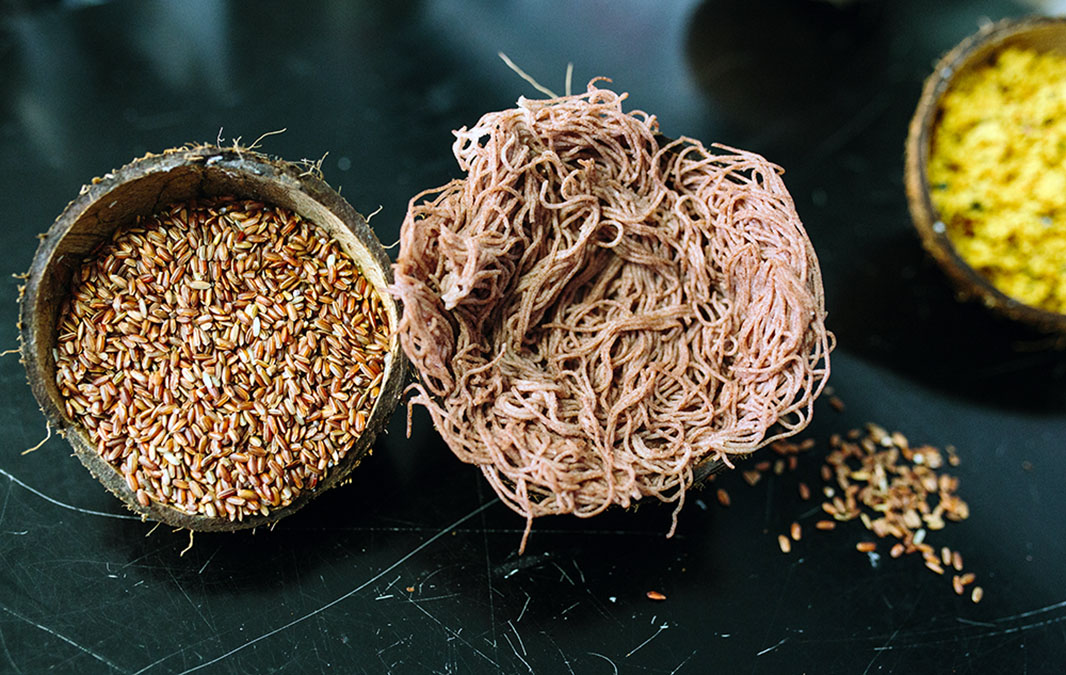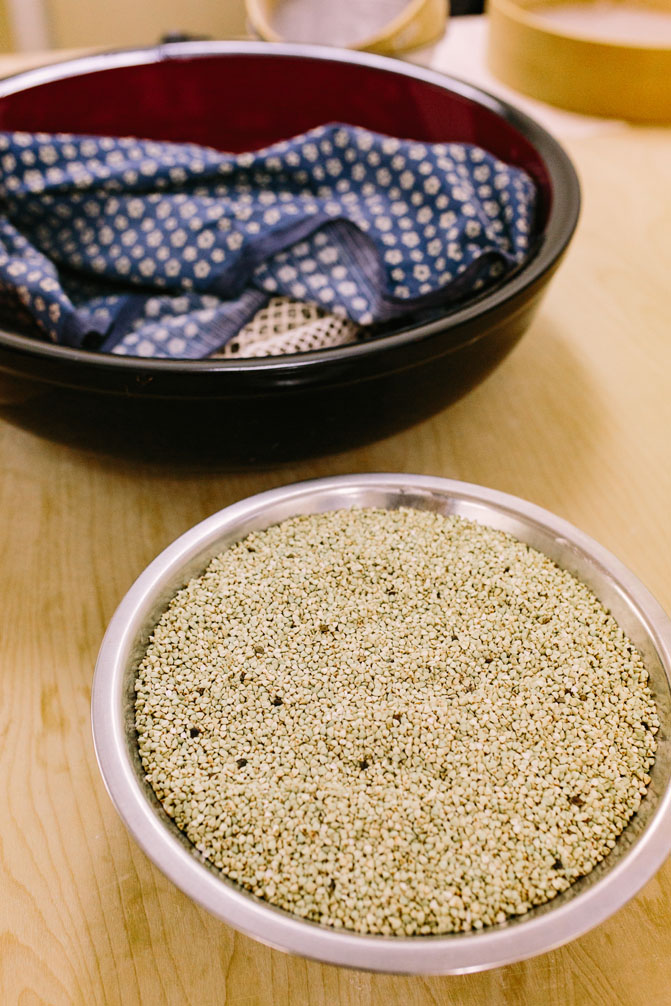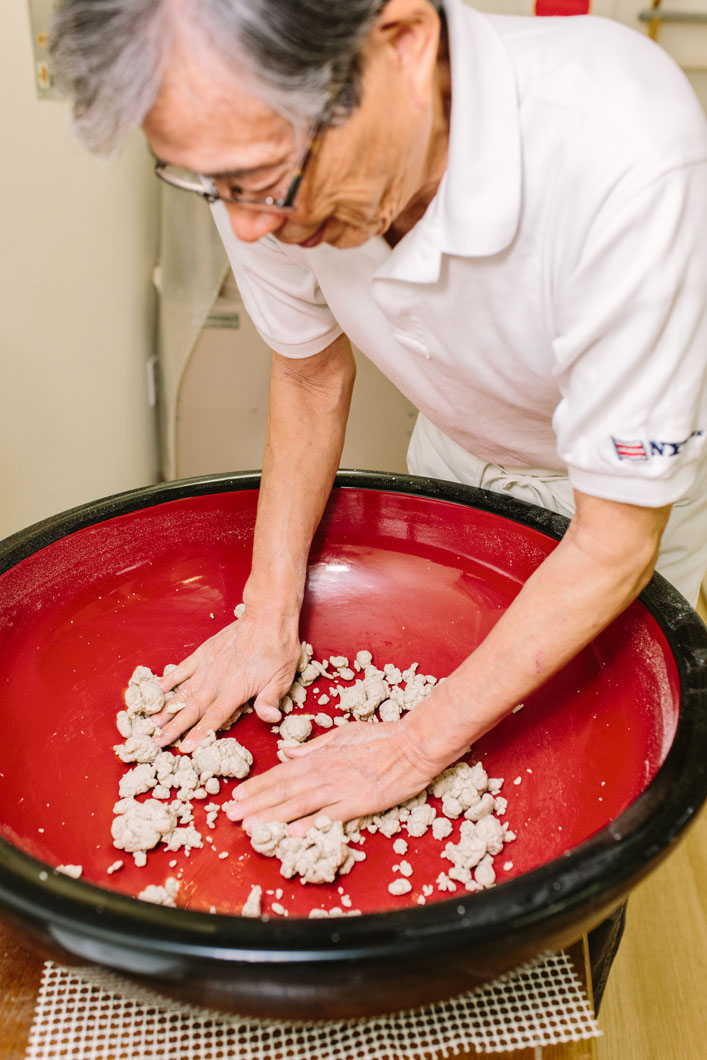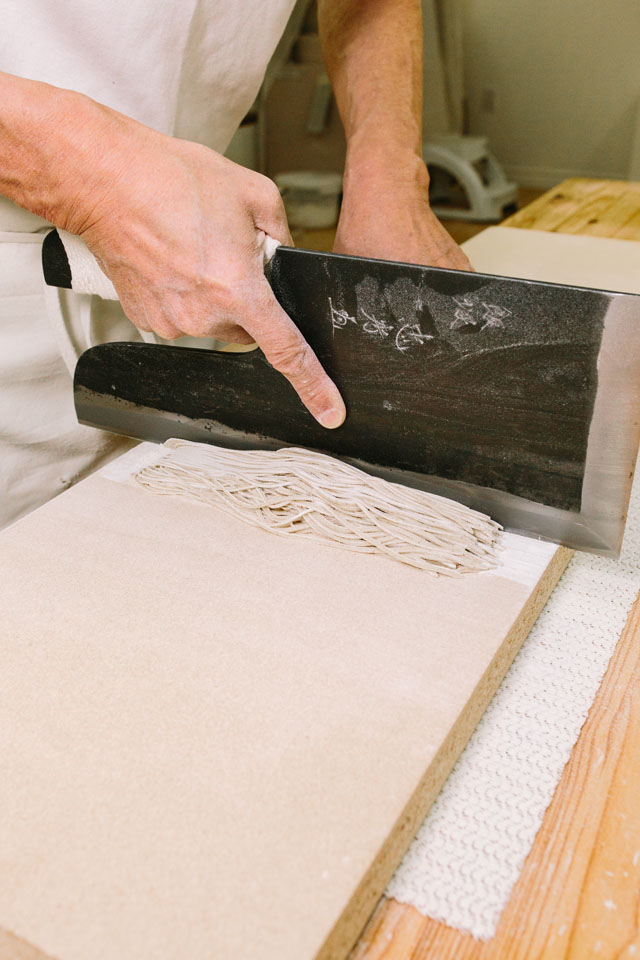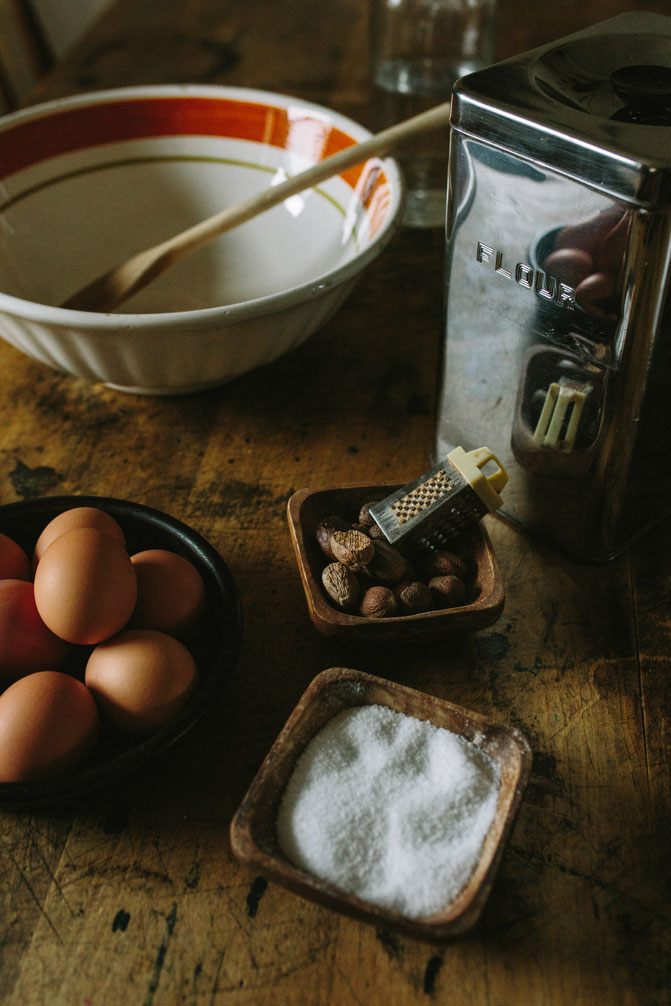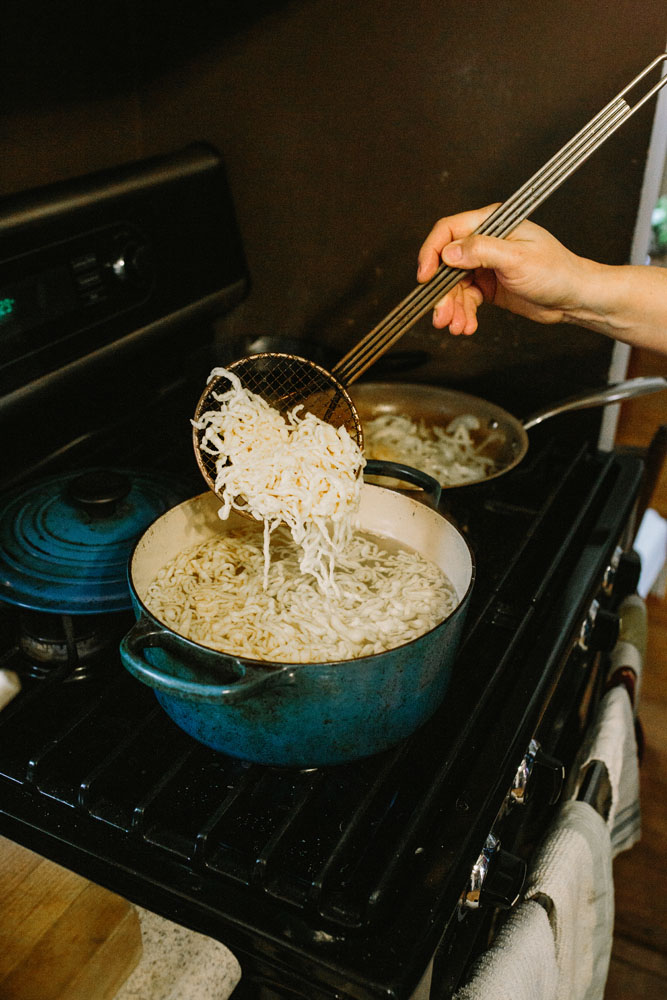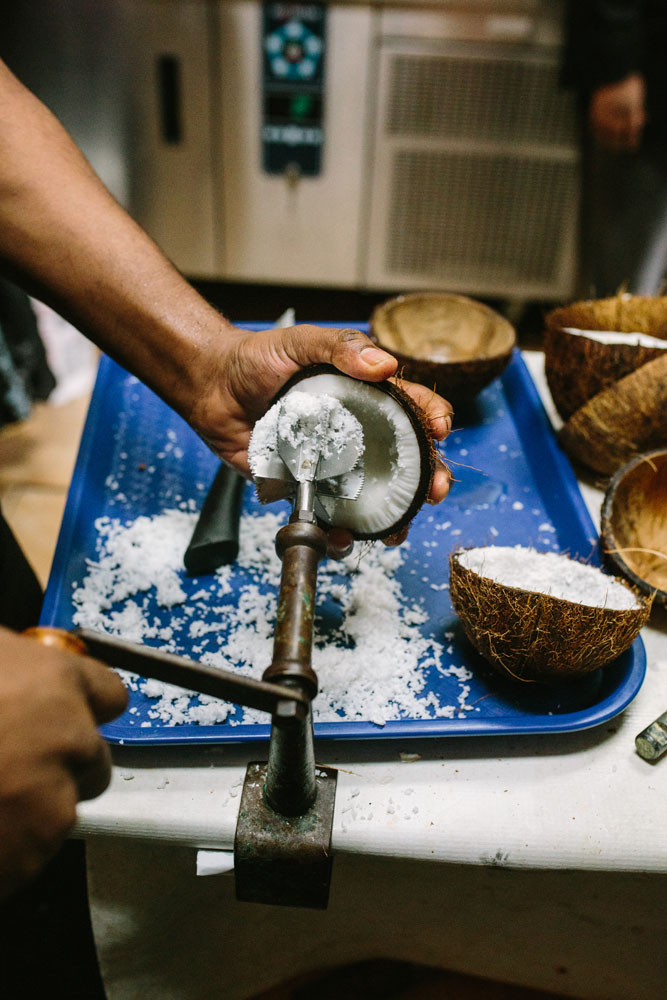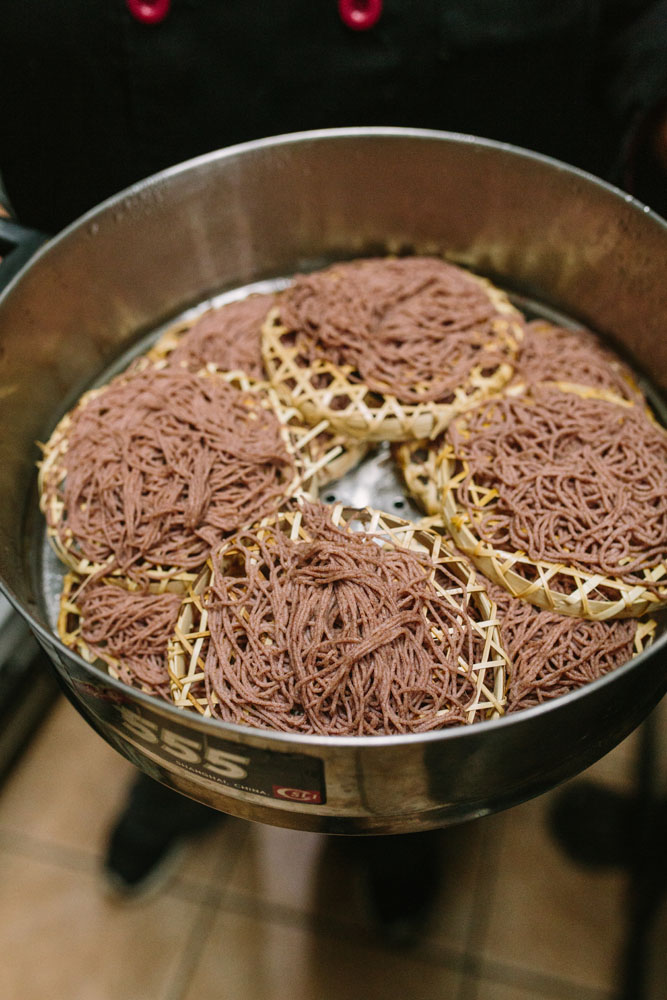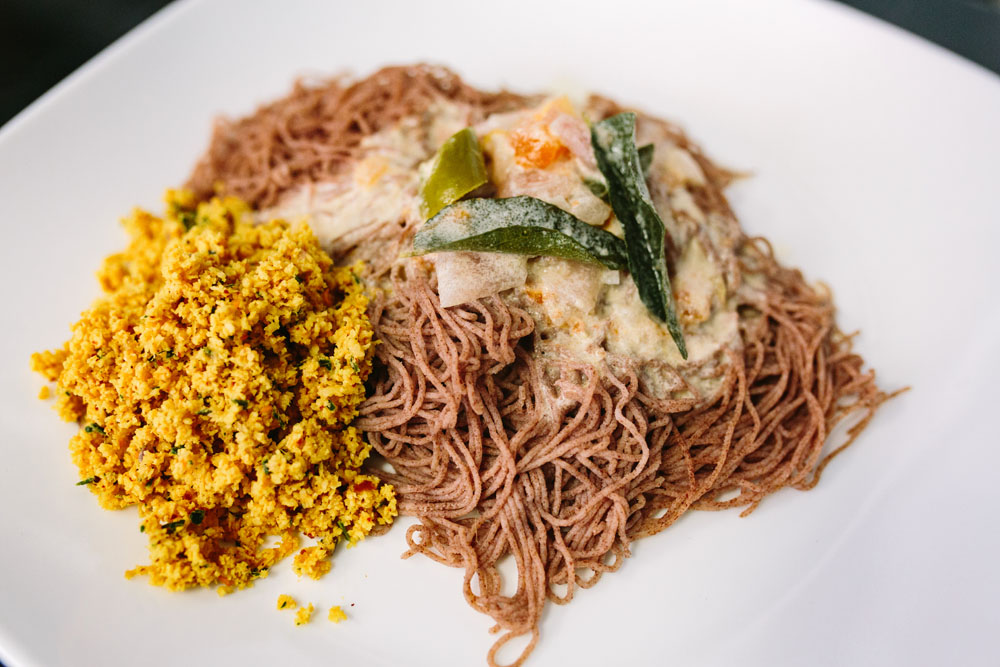Edible Toronto
Soba, Spaetzle and String Hoppers
Photo by Sarah Wiggins
String hoppers, traditional Sri Lankan noodles made from red-rice flour, quinoa or millet, are a popular dish at Suganthy Muthukumar's restaurant, Applespice, in Scarborough.
Ted Iizuka, above, Canada's first certified soba master, is seen in his home making the beloved Japanese buckwheat noodle that requires the dough to be precisely 1.3 millimetres thick. He became interested in making soba after hearing that 80 per cent of Canada's buckwheat crop is exported to Japan.
Mia Bachmaier, chef, food stylist, author and native of Germany, demonstrates how to make traditional spaetzle, a German eggnoodle that uses a one-to-one ratio of eggs and flour.
Today, some devices help create the shape of the small noodle, including a spaetzle press. Still, Bachmaier prefers doing it the traditional way when she has time, spreading the dough on a thin wooden board before scraping it in a quick motion into a pot of boiling water.
Sri Lankan string hoppers, noodles that originated more than 2000 years ago, aren't difficult to make, says Suganthy Muthukumar, but they are time-consuming. The noodles, traditionally made with red rice, quinoa or millet flour and water, are pressed through a device made from the South Asian poovarasan tree. You can eat them any time — for breakfast with a little coconut gravy or for dinner, served with curry.

